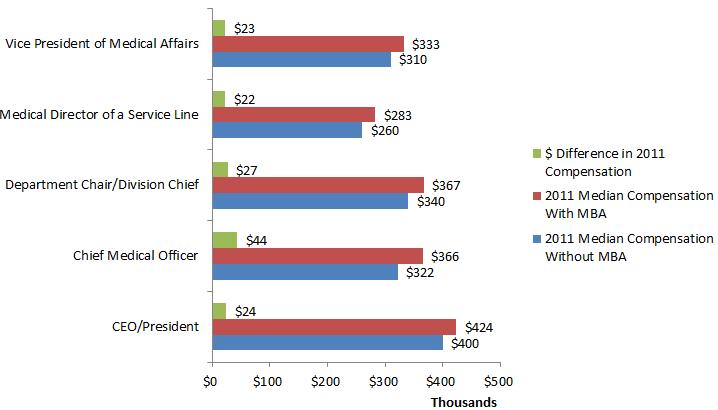By admin May 14, 2020
Содержание

Sometimes the breach in copyright infringement can lead to contingent liabilities. The new product the company is launching may still be kept discreet as the breach in secrecy may result in huge losses for the company. So if there is a breach of indiscretion, the other party, i.e., a supplier or designer hired may have to pay the liquidated damages. C) Is a liability that may occur if a future event occurs. Jan knows there’s been a change in the market value of ABC’s property since the last balance sheet was created. She also read the property tax percentages may go up, so she accesses the tax agency’s website to see that they have in fact increased.
- Still, accountants and investors may investigate these to ensure that a company is financially healthy.
- A small business can use this formula to check whether they accurately calculated their liabilities.
- The need to create an estimated warranty liability arises from the ________ principle.
- Suppose the company believes the customer will not win this case in the above example.
- In that case, ABC Ltd. records this contingent liability in their books of accounts.
In many instances, it is difficult in practice to determine the discount rate that would result from an insurance company or other third party settlement/transfer transaction. The insurance company or third party would expect to be compensated for the risks assumed along with a profit; therefore, the rate to assume the liability is generally less than the risk-free rate. However, because these settlement rates are often not determinable, practice has gravitated toward using the risk-free rate of monetary assets that have comparable maturities.
Warranties are promises to repair or replace broken or damaged parts or products. Since a company is unsure how many warranty claims they may receive, an appropriate estimate is required to calculate accurate warranty liabilities. The company has hundreds of employees who have retired with a pension.
Other Definitions of Liability
Legal defense costs means any expenses that an insurer incurs in defending against claims of third parties brought under the terms and conditions of an insurance policy. Suppose there are pending investigations or court cases against a company. In that case, the company has to disclose contingent liability in its books of accounts.
Assume, for example, that a bike manufacturer offers a three-year warranty on bicycle seats, which cost $50 each. If the firm manufactures 1,000 bicycle seats in a year and offers a warranty per seat, the firm needs to estimate the number of seats that may be returned under warranty each year. How can a company owe a debt and not know how much they owe?
Volunteers left searching for answers after Enrichmond dissolution leaves estimated $200K unaccounted for – WRIC ABC 8News
Volunteers left searching for answers after Enrichmond dissolution leaves estimated $200K unaccounted for.
Posted: Fri, 03 Mar 2023 21:38:20 GMT [source]
Estimated liability is a liability which is estimated for example the electricity bills or workers overtime etc. Add together all your liabilities, both short and long term, to find your total liabilities. A small business can use this formula to check whether they accurately calculated their liabilities. This article has a simple definition and examples relevant to small businesses. On November 7, 2017, Mura Company borrows $160,000 cash by signing a 90-day, 8% note payable with a face value of $160,000.
If you’re using Excel, plug in your assets and equity and make sure the equation works. To calculate liabilities, first you need to know what liabilities you have. That said, you should still check your work by using the basic accounting formula. Prepare journal entries to record these transactions and adjustments for 2016 and 2017. Estimated Liabilitythe amount claimed by the Buyer in respect of a Claim.
Is contingent liability an actual liability?
To the extent the loss is material, FSP Corp should disclose the nature of the events leading to the loss and additional amounts that are expected to be recovered. Are an amount of money agreed upon by parties under a contract that one party will pay to others upon breaching the contract. The non-defaulting may file a case and obtain a judgment for the number of liquidated damages; on the other hand, the defaulting party may record/disclose a contingent liability in the books of accounts.
Rules require an estimated liability: liabilities to be recorded in the accounts when a future event is likely to occur. Here, one can reasonably estimate the amount of the liability. A loss would be recorded, and a liability would be established before the settlement. Contingent liabilities are those liabilities that tend to occur in the future depending on an outcome. Such liabilities are recorded when their amount can be estimated.

If the owner is reluctant to take responsibility for their product, the customer can sue the company. To understand the concept of legal liability, let us take an example of a business owner. The examples also include the adverse judgment of the potential disputes. Is a known obligation of an uncertain amount that can be reasonably estimated.
Warranties as an Estimated Liability
On a balance sheet, liabilities are listed according to the time when the obligation is due. Example FSP 23-1 illustrates the recognition, measurement, and disclosure of a loss of equipment with a potential insurance recovery. Generally, to prevail on a strict product liability claim, a plaintiff must prove that an inherent defect in a product caused the damages claimed. In other words, the plaintiff must prove that the product was inherently defective and that the defect in the product caused the injury or damage. The rate of interest that investors are willing to receive for similar bonds of equal risk at the current time is the ________ rate of interest. Whether or not a company has an obligation depends on the result of a future event.

For example, say you need to calculate current liabilities for September. To do this, include your mortgage payment for September and any other money owing for that month only. Total liabilities simply mean the sum of all the money a business owes to its creditors.
Suppose ABC Ltd. is a pharmaceutical company developing a formula of medicine that cures diabetes. At the same time, another pharmaceutical company XYZ Ltd. filed a lawsuit of $1,000 million against ABC Ltd. for theft of its patent/know-how. ABC Ltd. feels they will lose the lawsuit and have to pay XYZ Ltd. In that case, ABC Ltd. records this contingent liability in their books of accounts.
Business Case Studies
The other part of the journal entry is to debit Warranty Expense and report it on the income statement. Two principal categories of current liabilities are definitely determinable liabilities and estimated liabilities. Estimated liabilities, such as liabilities for income taxes, property taxes, and product warranties, definitely exist, but the amounts must be estimated and record properly. All short-term liabilities, also called current liabilities, are debts or obligations due within a year or less.
FCC Approval has the meaning provided in paragraph 1 of Schedule 3. Notwithstanding anything else herein, the State’s total liability under this Contract or otherwise shall under no circumstances exceed the Estimated Liability. Liabilities refer to things that you owe or have borrowed; assets are things that you own or are owed.
Cincinnati Fire Department: $750,000 in estimated damages from … – WCPO 9 Cincinnati
Cincinnati Fire Department: $750,000 in estimated damages from ….
Posted: Sun, 05 Mar 2023 11:38:00 GMT [source]
Contingent liabilities are recorded if the contingency is likely and the amount of the liability can be reasonably estimated. The liability may be disclosed in a footnote on the financial statements unless both conditions are not met. Furthermore, What is the difference between estimated liability and contingent liability?
Finally, the owner owes the government $1000 in sales and income tax. Prepare Volvo’s journal entry to record its estimated warranty liabilities for 2014. Like businesses, an individual’s or household’s net worth is taken by balancing assets against liabilities. For most households, liabilities will include taxes due, bills that must be paid, rent or mortgage payments, loan interest and principal due, and so on.
Debt or obligation of an unknown amount that can be reasonably estimated. Suppose the company believes the customer will not win this case in the above example. Then, the company will have to report a contingent liability in its accounts notes. Strict liability is an important factor in maintaining safety in high-risk environments by encouraging individuals, employers, and other parties to implement the means to prevent injuries and damages. Construction, manufacturing, and other potentially dangerous work settings are typically subject to strict liability.

Most employee guaranteed benefit programs are impossible to measure. These obligations are based many different things like the number of employees, employee retirement rates, employee compensation, vesting rules, etc. It would be impossible to calculate exactly how much the company will be on the hook for with all of these conditions. A reporting entity is required to disclose the nature of the contingency and an estimate of the possible loss, range of loss, or disclose the fact that an estimate cannot be made.
If one of the conditions is not satisfied, a company does not report a contingent liability on the balance sheet. However, it should disclose this item in a footnote on the financial statements. Both GAAP and IFRS require companies to record contingent liabilities. Accrued ExpensesAn accrued expense is the expenses which is incurred by the company over one accounting period but not paid in the same accounting period.
Non-Current (Long-Term) Liabilities
Liabilities are a vital aspect of a company because they are used to finance operations and pay for large expansions. They can also make transactions between businesses more efficient. For example, in most cases, if a wine supplier sells a case of wine to a restaurant, it does not demand payment when it delivers the goods. Rather, it invoices the restaurant for the purchase to streamline the drop-off and make paying easier for the restaurant. Total liabilities are the combined debts, both short- and long-term, that an individual or company owes.